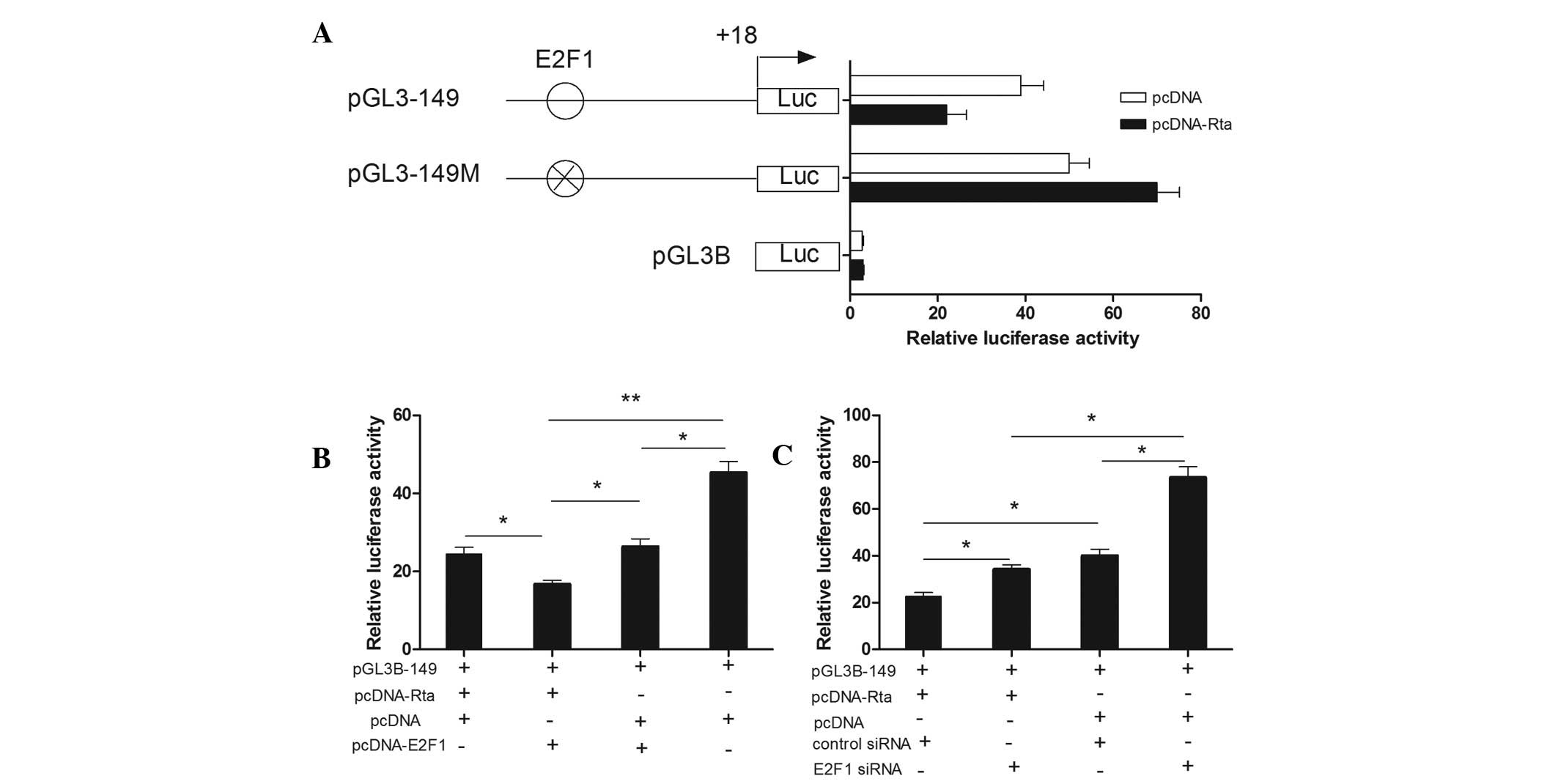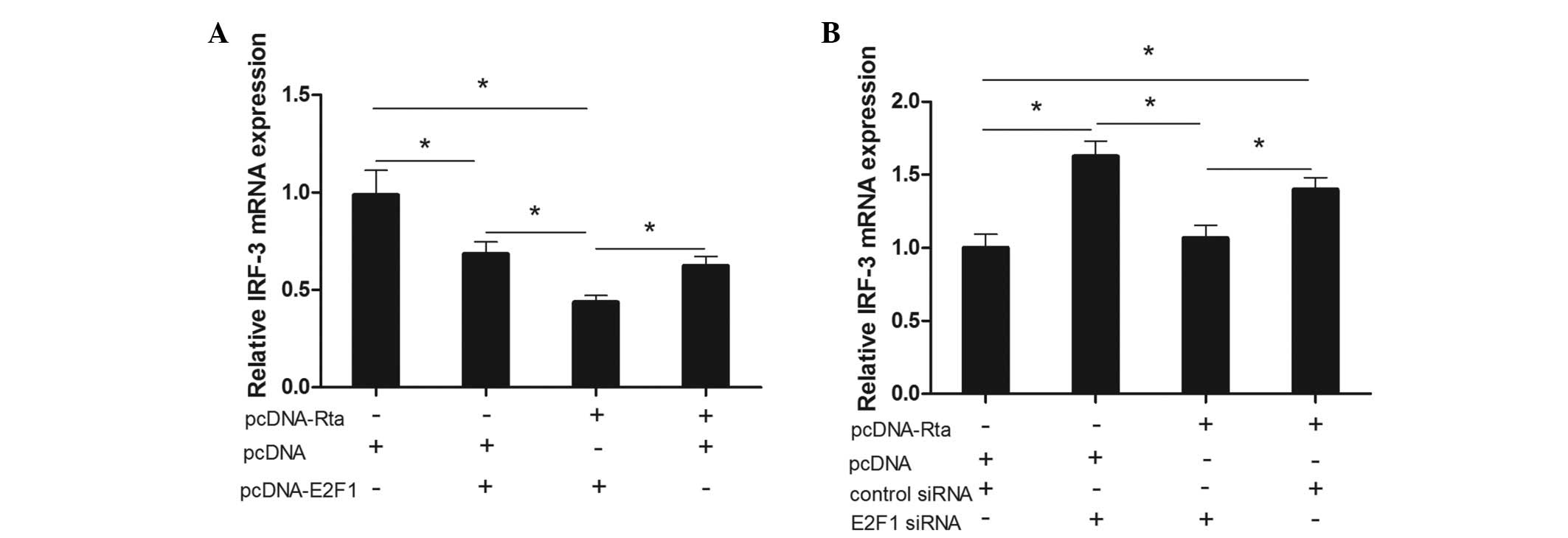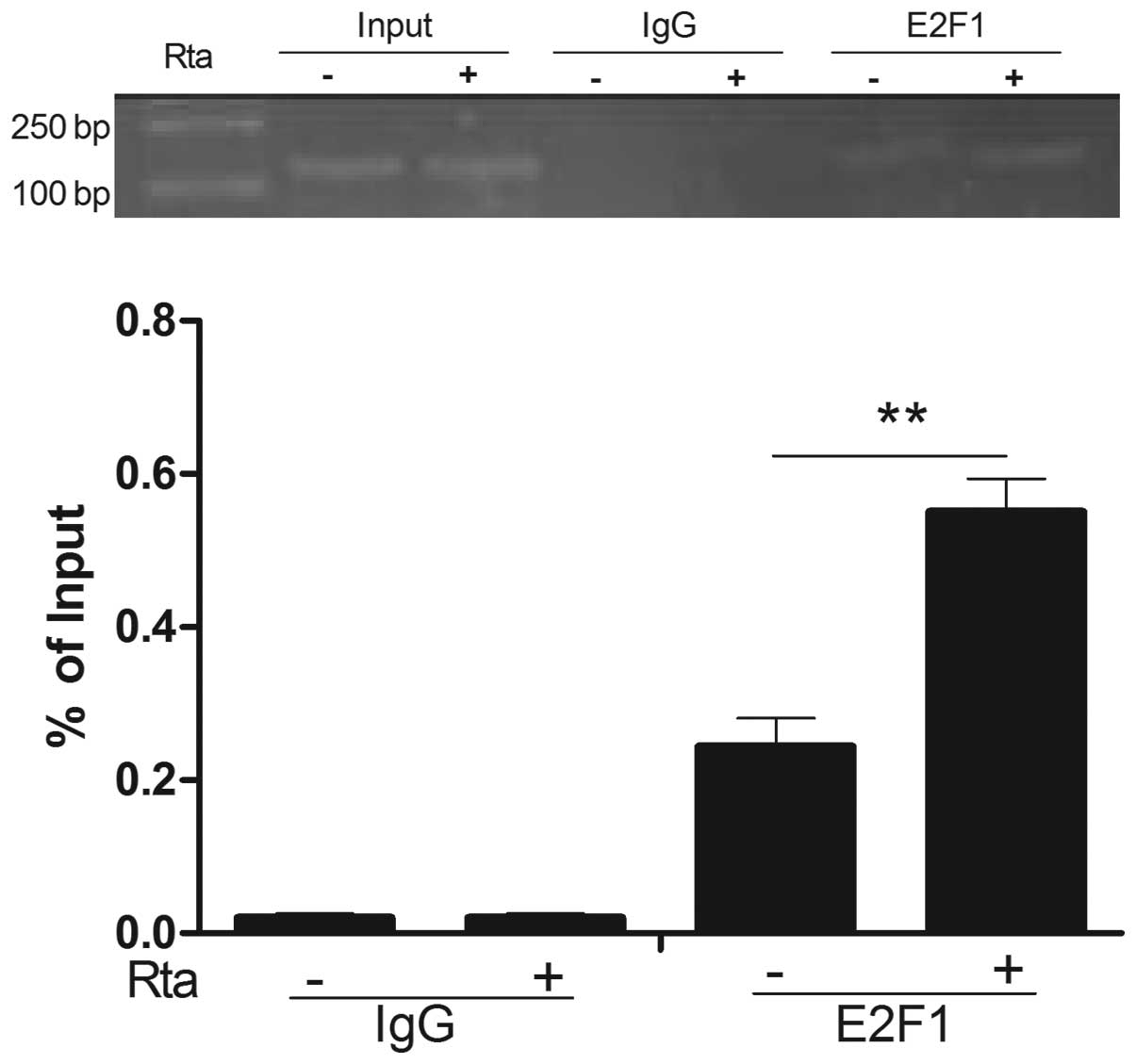|
1
|
Eason DD, Shepherd AT and Blanck G:
Interferon regulatory factor 1 tryptophan 11 to arginine point
mutation abolishes DNA binding. Biochim Biophys Acta. 1446:140–144.
1999. View Article : Google Scholar : PubMed/NCBI
|
|
2
|
Honda K and Taniguchi T: IRFs: master
regulators of signalling by Toll-like receptors and cytosolic
pattern-recognition receptors. Nat Rev Immunol. 6:644–658. 2006.
View Article : Google Scholar : PubMed/NCBI
|
|
3
|
Honda K, Takaoka A and Taniguchi T: Type I
interferon [corrected] gene induction by the interferon regulatory
factor family of transcription factors. Immunity. 25:349–360.
2006.
|
|
4
|
Weaver BK, Kumar KP and Reich NC:
Interferon regulatory factor 3 and CREB-binding protein/p300 are
subunits of doublestranded RNA-activated transcription factor
DRAF1. Mol Cell Biol. 18:1359–1368. 1998.PubMed/NCBI
|
|
5
|
Yoneyama M, Suhara W, Fukuhara Y, et al:
Direct triggering of the type I interferon system by virus
infection: activation of a transcription factor complex containing
IRF-3 and CBP/p300. EMBO J. 17:1087–1095. 1998. View Article : Google Scholar : PubMed/NCBI
|
|
6
|
Lin R, Heylbroeck C, Pitha PM and Hiscott
J: Virus-dependent phosphorylation of the IRF-3 transcription
factor regulates nuclear translocation, transactivation potential,
and proteasomemediated degradation. Mol Cell Biol. 18:2986–2996.
1998.
|
|
7
|
Young LS and Rickinson AB: Epstein-Barr
virus: 40 years on. Nat Rev Cancer. 4:757–768. 2004.PubMed/NCBI
|
|
8
|
Se Thoe SY, Wong KK, Pathmanathan R, Sam
CK, Cheng HM and Prasad U: Elevated secretory IgA antibodies to
Epstein-Barr virus (EBV) and presence of EBV DNA and EBV receptors
in patients with cervical carcinoma. Gynecol Oncol. 50:168–172.
1993.PubMed/NCBI
|
|
9
|
Bentz GL, Liu R, Hahn AM, Shackelford J
and Pagano JS: Epstein-Barr virus BRLF1 inhibits transcription of
IRF3 and IRF7 and suppresses induction of interferon-beta.
Virology. 402:121–128. 2010. View Article : Google Scholar : PubMed/NCBI
|
|
10
|
Xu HG, Ren W, Lu C and Zhou GP:
Characterization of the human IRF-3 promoter and its regulation by
the transcription factor E2F1. Mol Biol Rep. 37:3073–3080. 2010.
View Article : Google Scholar : PubMed/NCBI
|
|
11
|
Xu HG, Ren W, Zou L, Wang Y, Jin R and
Zhou GP: Direct repression of the human IRF-3 promoter by E2F1.
Immunogenetics. 63:189–196. 2011. View Article : Google Scholar : PubMed/NCBI
|
|
12
|
Rogoff HA, Pickering MT, Frame FM, et al:
Apoptosis associated with deregulated E2F activity is dependent on
E2F1 and Atm/Nbs1/Chk2. Mol Cell Biol. 24:2968–2977. 2004.
View Article : Google Scholar : PubMed/NCBI
|
|
13
|
Melroe GT, DeLuca NA and Knipe DM: Herpes
simplex virus 1 has multiple mechanisms for blocking virus-induced
interferon production. J Virol. 78:8411–8420. 2004. View Article : Google Scholar : PubMed/NCBI
|
|
14
|
Melroe GT, Silva L, Schaffer PA and Knipe
DM: Recruitment of activated IRF-3 and CBP/p300 to herpes simplex
virus ICP0 nuclear foci: Potential role in blocking IFN-beta
induction. Virology. 360:305–321. 2007. View Article : Google Scholar : PubMed/NCBI
|
|
15
|
Saira K, Zhou Y and Jones C: The infected
cell protein 0 encoded by bovine herpesvirus 1 (bICP0) induces
degradation of interferon response factor 3 and, consequently,
inhibits beta interferon promoter activity. J Virol. 81:3077–3086.
2007. View Article : Google Scholar : PubMed/NCBI
|
|
16
|
Abate DA, Watanabe S and Mocarski ES:
Major human cytomegalovirus structural protein pp 65 (ppUL83)
prevents interferon response factor 3 activation in the interferon
response. J Virol. 78:10995–11006. 2004. View Article : Google Scholar : PubMed/NCBI
|
|
17
|
Jaworska J, Gravel A, Fink K, Grandvaux N
and Flamand L: Inhibition of transcription of the beta interferon
gene by the human herpesvirus 6 immediate-early 1 protein. J Virol.
81:5737–5748. 2007. View Article : Google Scholar : PubMed/NCBI
|
|
18
|
Gruffat H and Sergeant A: Characterization
of the DNA-binding site repertoire for the Epstein-Barr virus
transcription factor R. Nucleic Acids Res. 22:1172–1178. 1994.
View Article : Google Scholar : PubMed/NCBI
|
|
19
|
Swenson JJ, Holley-Guthrie E and Kenney
SC: Epstein-Barr virus immediate-early protein BRLF1 interacts with
CBP, promoting enhanced BRLF1 transactivation. J Virol.
75:6228–6234. 2001. View Article : Google Scholar : PubMed/NCBI
|
|
20
|
Ho CH, Hsu CF, Fong PF, et al:
Epstein-Barr virus transcription activator RTA upregulates decoy
receptor 3 expression by binding to its promoter. J Virol.
81:4837–4847. 2007. View Article : Google Scholar : PubMed/NCBI
|
|
21
|
Chang LK, Chung JY, Hong YR, et al:
Activation of Sp1-mediated transcription by RTA of Epstein-Barr
virus via an interaction with MCAF1. Nucleic Acids Res.
33:6528–6539. 2005. View Article : Google Scholar : PubMed/NCBI
|
|
22
|
Liu C, Sista ND and Pagano JS: Activation
of the Epstein-Barr virus DNA polymerase promoter by the BRLF1
immediate-early protein is mediated through USF and E2F. J Virol.
70:2545–2555. 1996.PubMed/NCBI
|
|
23
|
Swenson JJ, Mauser AE, Kaufmann WK and
Kenney SC: The Epstein-Barr virus protein BRLF1 activates S phase
entry through E2F1 induction. J Virol. 73:6540–6550.
1999.PubMed/NCBI
|
|
24
|
Guo Q, Sun X, Yuan C, Zhou H, Li Y, Jie G
and Jiang G: Effect of Rta protein of Epstein-Barr virus on the
cell cycle in HeLa cells. Acta Virol. 55:311–316. 2011. View Article : Google Scholar : PubMed/NCBI
|















